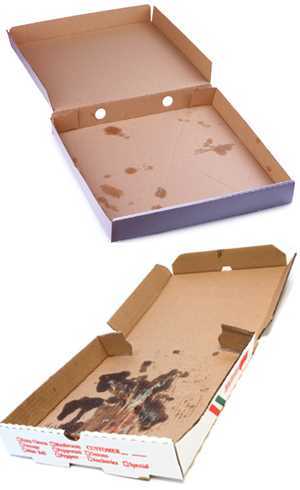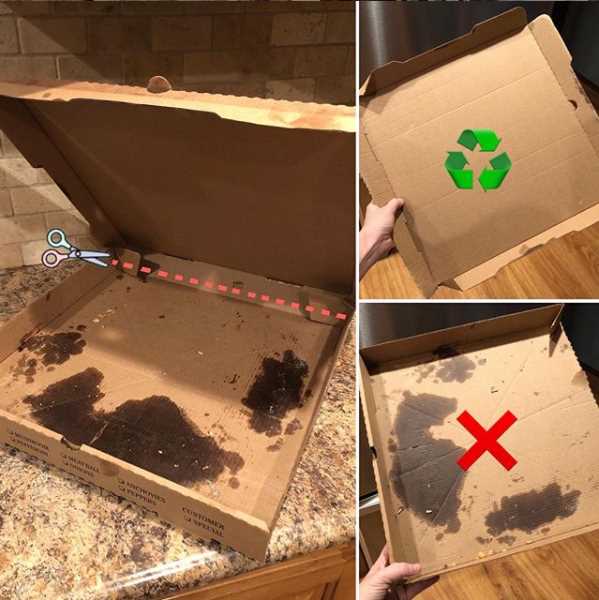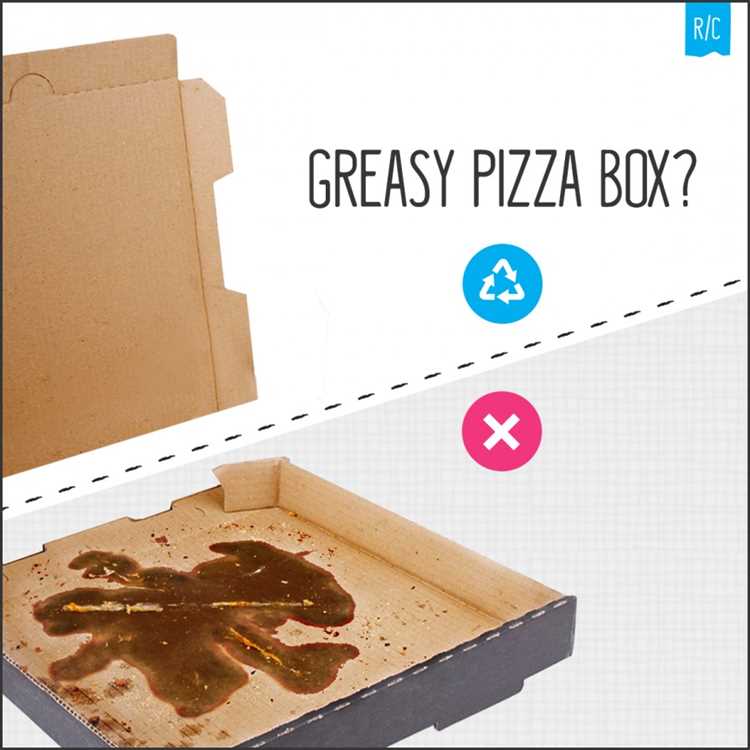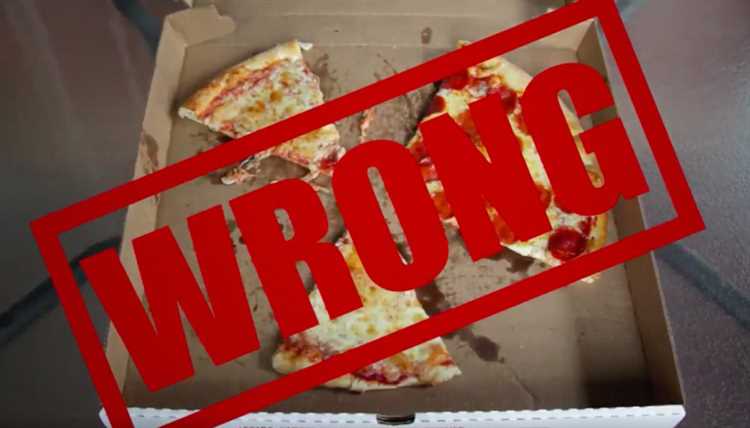
Cardboard recycling is an essential part of efforts to reduce waste and protect the environment. However, when it comes to recycling cardboard that has been in contact with grease, such as pizza boxes, there is some confusion. Can you recycle cardboard with grease?
The short answer is: it depends. While cardboard is generally recyclable, it becomes more challenging when it is contaminated with grease or other food residues. The presence of grease can contaminate the cardboard recycling process and affect the quality of the final product.
Recycling facilities are equipped to handle clean and uncontaminated cardboard, but when it comes to grease-soaked pizza boxes or other food containers, the recycling process becomes less efficient. The grease can seep into the cardboard fibers, making it harder to recycle and potentially compromising the quality of the recycled paper products.
However, not all hope is lost. Some recycling facilities may still accept cardboard with minor grease stains, as long as the majority of the material is clean. It is recommended to remove any excessive food residues and scrape off as much grease as possible before placing cardboard in the recycling bin. This helps reduce contamination and increases the chances of successful recycling.
- Recycling cardboard: what you need to know
- Understanding the impact of grease on cardboard recycling
- Grease contamination
- Recycling challenges
- Tips for removing grease from cardboard
- 1. Blotting paper or cloth
- 2. Dish soap and warm water
- Alternative ways to reuse greasy cardboard
- 1. Composting
- 2. Reuse as a weed barrier
- Recycling facilities: do they accept greasy cardboard?
- Why is greasy cardboard a problem?
- What should you do with greasy cardboard?
- Q&A:
- Can you recycle cardboard with grease?
- What should I do if there is a small amount of grease on cardboard?
- Can I recycle cardboard pizza boxes?
- Why is it important to remove grease from cardboard before recycling?
Recycling cardboard: what you need to know
Cardboard is one of the most commonly recycled materials, as it is a sustainable and eco-friendly option. However, when it comes to recycling cardboard with grease, there are a few things you need to know.
1. Clean cardboard is the best option: While it is possible to recycle cardboard with grease, it is always better to recycle clean cardboard. Grease and oil can contaminate the cardboard, making it more difficult to recycle and potentially reducing its value as a recyclable material.
2. Separate the greasy parts: If you have cardboard that is partially greasy, it’s a good idea to separate the clean parts from the greasy ones. You can recycle the clean parts as usual, while disposing of the greasy parts in the trash. This will ensure that the clean cardboard doesn’t get contaminated and can be recycled effectively.
3. Use alternatives for greasy cardboard: If you frequently deal with greasy cardboard, consider using alternative materials such as compostable or biodegradable packaging. These materials are designed to break down naturally and can be a more sustainable option for greasy products.
4. Check with your local recycling center: Recycling guidelines may vary depending on your location. It’s always a good idea to check with your local recycling center to see if they accept cardboard with grease. They may have specific instructions or requirements for recycling this type of material.
5. Remove any non-recyclable materials: Before recycling cardboard, make sure to remove any non-recyclable materials such as plastic, tape, or metal. These items can contaminate the recycling process and reduce the quality of the recycled cardboard.
6. Consider composting: If your cardboard is heavily greased and cannot be recycled, consider composting it instead. Cardboard can be a valuable addition to compost piles and can help create nutrient-rich soil for gardening.
By following these guidelines, you can ensure that your cardboard recycling efforts are effective and sustainable. Remember to always check with your local recycling center for specific instructions and guidelines.
Understanding the impact of grease on cardboard recycling

Cardboard is a widely used packaging material that can be recycled multiple times, making it an environmentally-friendly choice. However, when cardboard comes into contact with grease, its recyclability can be affected.
Grease contamination
Grease or oil can cause significant damage to cardboard fibers, making it more difficult to recycle. When cardboard absorbs grease, it becomes saturated, causing the fibers to lose their strength and flexibility. This contamination can render the cardboard unusable for recycling purposes.
Recycling challenges
The presence of grease in cardboard poses several challenges for the recycling process. Firstly, when grease mixes with water in the recycling process, it creates a layer of sludge that can clog machinery and reduce efficiency. The oil can also spread to other recyclables, further contaminating the recycling stream.
Additionally, the quality of the recycled cardboard produced from contaminated materials is compromised. The fibers in grease-contaminated cardboard are weakened, resulting in a lower-quality recycled product. This can limit the potential uses and value of the recycled cardboard.
Another challenge is the separation of grease-contaminated cardboard from clean cardboard during the recycling sorting process. This requires additional resources and may not always be feasible in large-scale recycling facilities.
Overall, it is important to prevent grease contamination in cardboard to enhance its recyclability and contribute to a more sustainable recycling process.
Tips for removing grease from cardboard
Cardboard is a versatile and environmentally friendly material that can be recycled, but when it becomes greased, it can be more challenging to recycle. Grease can soak into the fibers of the cardboard, making it difficult to remove. However, with these useful tips, you can effectively remove grease from cardboard for a cleaner recycling process:
1. Blotting paper or cloth
If the grease on the cardboard is fresh, start by gently blotting the affected area with absorbent paper or cloth. This will help remove excess grease from the surface, preventing it from penetrating further into the cardboard fibers.
2. Dish soap and warm water
Create a solution by combining warm water and a small amount of dish soap. Dip a sponge or soft cloth into the soapy water and gently scrub the greased area. Make sure to be gentle to avoid damaging the cardboard. Rinse the area with clean water and blot with a dry cloth to remove excess moisture.
Note: Avoid using excessive amounts of water, as this can weaken the cardboard and make it more difficult to recycle.
By following these simple tips, you can effectively remove grease from cardboard, making it easier to recycle. Remember to check with your local recycling guidelines to ensure that the grease-free cardboard can be recycled in your area.
Alternative ways to reuse greasy cardboard

While recycling greasy cardboard may not be possible due to the contamination it can cause, there are still several alternative ways to give your greasy cardboard a second life.
1. Composting
If you have a composting system at home, you can tear up the greasy cardboard and add it to your compost pile. The grease will break down over time, and the cardboard will provide carbon-rich material that helps with the decomposition process.
2. Reuse as a weed barrier
Greasy cardboard can serve as an effective weed barrier in your garden. Lay the cardboard on the ground in areas where you want to prevent weed growth, and cover it with a layer of mulch or soil. This will help to suppress weeds and retain moisture in your garden.
Remember to remove any tape or stickers from the greasy cardboard before using it for composting or as a weed barrier.
Recycling facilities: do they accept greasy cardboard?
When it comes to recycling, cardboard is usually accepted at most recycling facilities. However, things get a bit more complicated when it comes to greasy cardboard. Grease can contaminate the recycling process and affect the quality of the final recycled product. Therefore, not all recycling facilities are equipped to handle greasy cardboard.
Why is greasy cardboard a problem?

Grease-stained cardboard, such as pizza boxes or fast food containers, is considered a type of “soiled” cardboard. The grease and food residue can mix with the paper fibers during the recycling process and cause issues.
First, the presence of grease can interfere with the pulping process. The pulping process involves soaking cardboard in water to break it down into paper fibers. The grease can create a layer on top of the water, preventing the fibers from properly separating.
Second, the grease can cause the paper fibers to clump together, affecting the quality of the recycled paper produced. It can also reduce the efficiency of the recycling machinery and lead to clogs or breakdowns.
Due to these issues, recycling facilities may have specific guidelines and restrictions when it comes to accepting greasy cardboard.
What should you do with greasy cardboard?
If your cardboard is greasy, it is best to avoid putting it in your regular recycling bin. Instead, check with your local recycling facility to see if they accept greasy cardboard. Some recycling facilities have the capability to separate out the contaminated fibers and discard them properly, while others may not accept it at all.
If your local recycling facility does not accept greasy cardboard, you can consider alternative options. One option is to tear off the greasy parts and recycle the clean sections of the cardboard. You can also compost the greasy cardboard if you have a composting system in place. However, it is important to check with your local composting facility to ensure they accept greasy materials.
It is worth noting that cardboard can often be reused in various ways before it needs to be recycled. Depending on the condition of your greasy cardboard, you can repurpose it for crafts, use it as packaging material, or even use it as a weed barrier in your garden.
In conclusion, recycling facilities may or may not accept greasy cardboard. It is important to check with your local facility to ensure proper disposal. If it is not accepted, consider alternative options such as tearing off the greasy parts, composting, or reusing the cardboard before resorting to regular recycling.
Q&A:
Can you recycle cardboard with grease?
Yes, you can recycle cardboard with grease. However, it is important to note that heavily greased cardboard may contaminate the recycling process and reduce the quality of the recycled material.
What should I do if there is a small amount of grease on cardboard?
If there is a small amount of grease on cardboard, you can try to remove it by scraping off any excess grease and then wiping the cardboard with a paper towel. Once the cardboard is relatively clean, you can recycle it as usual.
Can I recycle cardboard pizza boxes?
Yes, you can recycle cardboard pizza boxes. However, it is important to remove any leftover food and grease before recycling them. If the pizza box is heavily greased or soiled, it is best to tear off the uncontaminated parts and recycle those instead.
Why is it important to remove grease from cardboard before recycling?
It is important to remove grease from cardboard before recycling because the grease can contaminate the recycling process. When cardboard with grease is mixed with other clean cardboard, it can reduce the quality of the recycled material and potentially render it unusable.